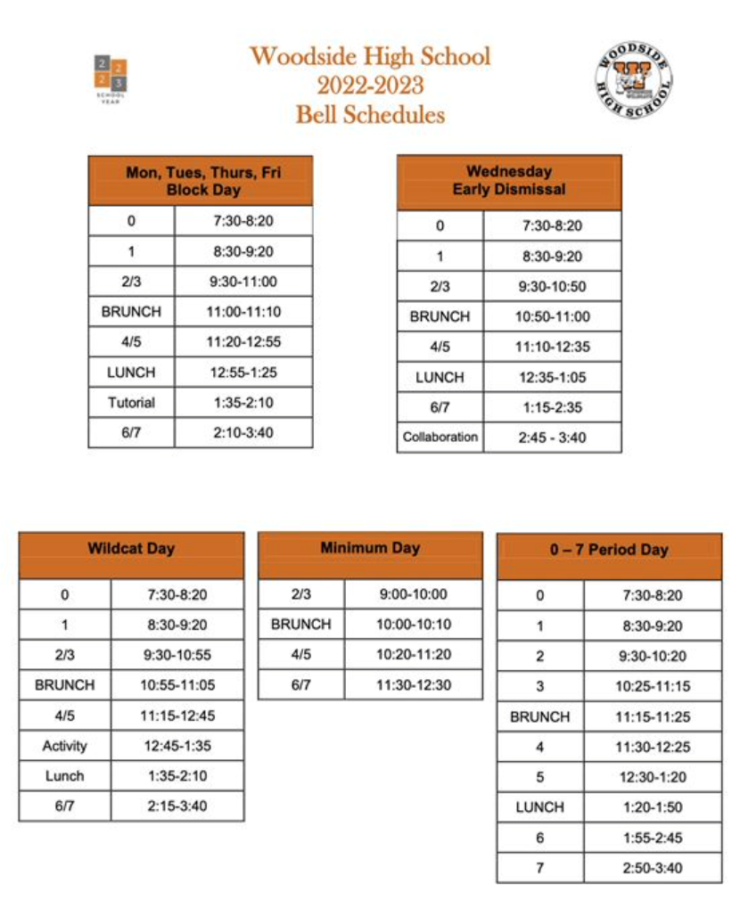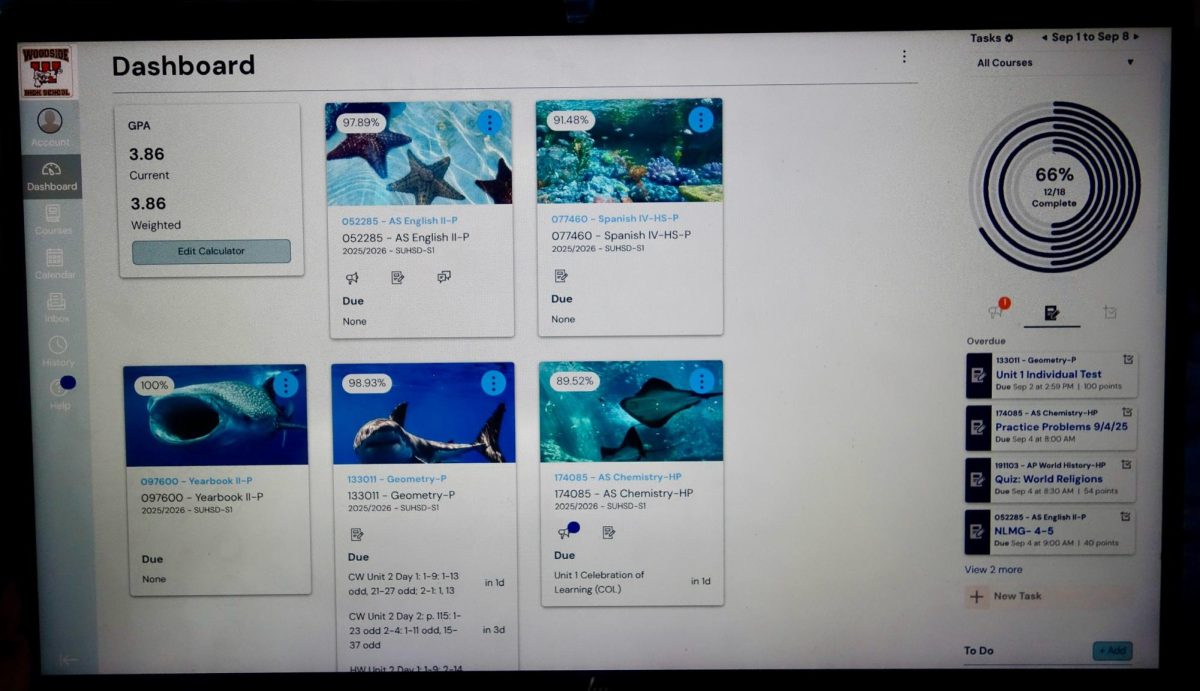By the time the 2022-2023 school year finishes, Woodside High School will have had ten minimum days, or days in which school starts without a first period, at 9:00 a.m., and ends at 12:30 p.m. That’s eight more than last year. To many students and parents, information surrounding minimum days is fairly unknown; how teachers spend minimum days, why teachers have minimum days, what the purpose of minimum days is, are all questions asked by students unclear on minimum days.
“This year, the district decided to have minimum days for some equity, diversity, and inclusion work,” Instructional Vice Principal Cara Klackle said. “The last [minimum day] was about implicit bias. I think one before that was about systemic racism.”
The decision for additional minimum days came from the Sequoia Union High School District, which encompasses Woodside and six other high schools and which worked in collaboration with the University of Southern California.
“The district came up with five dates for [Diversity, Equity, and Inclusion instructional training] this school year,” Klackle said. “They worked with the University of Southern California, and one of their schools of thinking, the School of Diversity, Equity, and Inclusion.”
In the US, states mandate a minimum amount of ‘instructional minutes’ – minutes that each high school must be in session for throughout a year. For California, high schools are required to teach for 64,800 minutes.
“Typically, we’re over [the minimum of instructional] minutes,” Klackle said. “With these minimum days, we’re really close [to the minimum number of instructional minutes] – we’re almost at the point where we don’t have enough instructional minutes.”
The decrease in total instructional minutes from minimum days raises concerns over reaching the needed instructional minute requirements, but also, for many staff members, minimum days often mean a cramped time period to instruct their students in their respective topics.
“We’re all kind of struggling with the disruptions to our schedules,” English teacher Mark Reibstein said.
Minimum days, which are sometimes added to the schedule in short notice, decrease the time allotted for periods in a school day. 90 minute classes shrink down to ⅔ of their original size on minimum days.
“They’re tough for teachers [trying to] get everything done,” Klackle said. “The [periods] are only an hour – that’s just not a lot of time.”
At the same time, the demand for minimum days comes, at least partially, from teachers. When Woodside High School has after-school events, which require teachers to stay at campus after school hours, due to contract specifications, teachers have decreased work hours the next day, resulting in minimum days.
“The reason for [having minimum days] after back to school night or after open house is to give teachers a break because they’re here until nine o’clock the night before [the minimum day],” Klackle said. “So they get a half day the following day, [as per] their contract.”
While for teachers, minimum days often involve required staff training, students are able to spend the afternoons in a variety of ways.
“[On minimum days], I do homework, I play video games, [and] I get some extra sleep in,” junior Leif Austin said.
As school would normally end around 3:40 (2:35 on Wednesdays), students are provided with over three extra hours of their afternoon to spend as they would like.
“[On minimum day afternoons], there’s a lot more time,” junior Mateo Chen said. “I can usually get my work done earlier and do what I want. I usually don’t have a lot of time, so minimum days really do help.”
The ability to complete more homework assignments thanks to a longer afternoon is a highly positive benefit to many students. However, to others, full break days are even more valuable, prompting thought over whether minimum days could be exchanged for break days.
“I would say we should decrease the number of minimum days because I feel like you should have more days off, instead of half days,” junior Kian Sharifzadeh said. “We should have more full school days and then have more days off later in the year.”
According to Klackle however, such a change may be harder than it appears.
“The District Board and the two unions that classify teaching, the classified staff union and the teaching union, get together and develop the instructional calendar,” Klackle said. “That calendar determines when breaks are, so each school site doesn’t get to choose [when breaks or minimum days] are.”
Regardless, minimum days are here to stay, even if they might fluctuate in quantity from year to year. As this time of year is often stressful for many students due to college decisions or AP exam preparations, Klackle offers some advice.
“Maybe just take a break [on minimum days],” Klackle said. “I know students are really overwhelmed with school and being back full time in person. Maybe [minimum days] are a way for them to take a mental break.”












